Home » Grouse Species » Sage Grouse Hunting » A Guide to Hunting Sage Grouse
A Guide to Hunting Sage Grouse
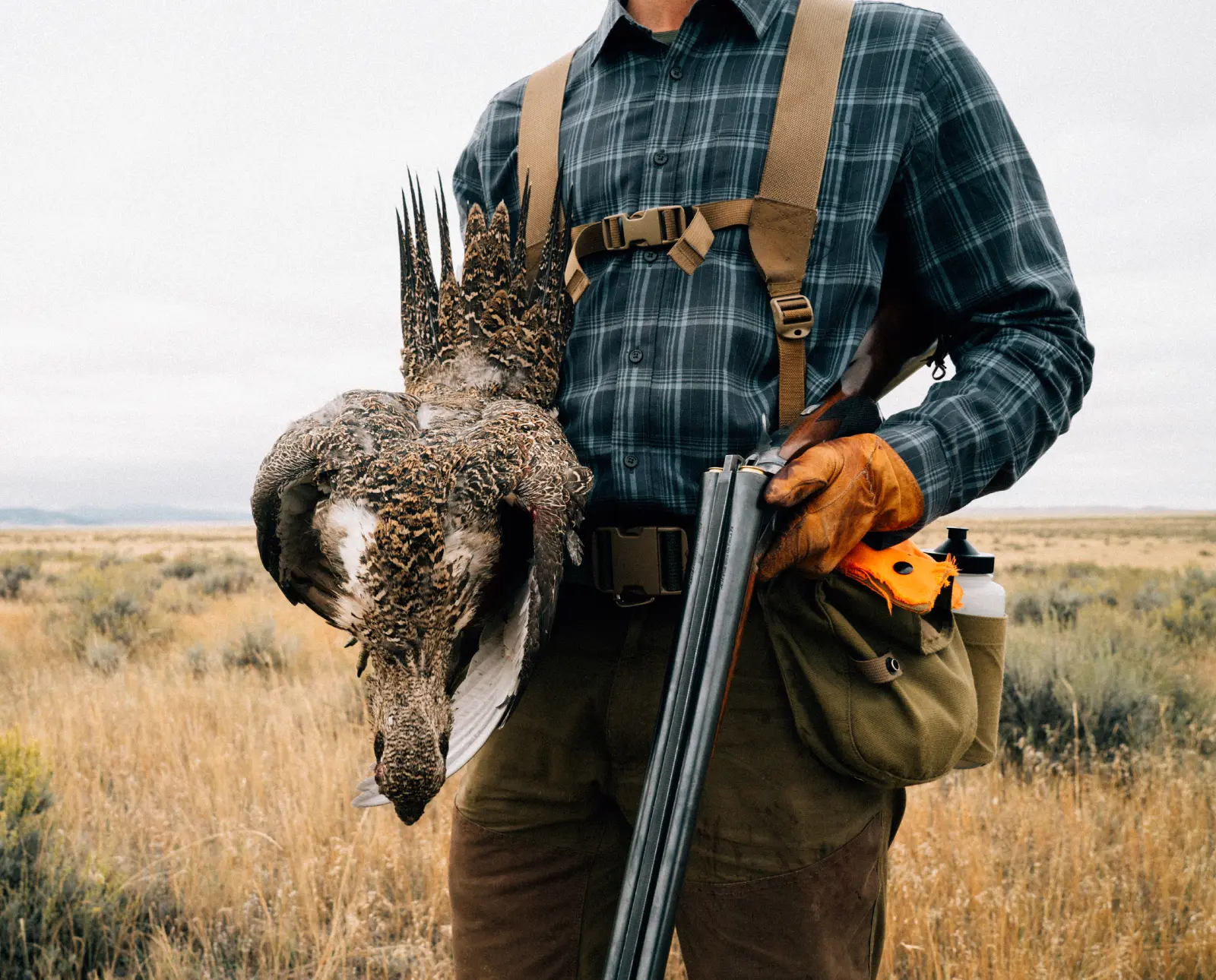
Danielle Schoenwolf is a Wyoming native, upland guide, and the…
Sage grouse hunting is a privilege that comes with significant responsibility.
Each September, an inexplicable reverence stirs within me as I patiently await the chance to roam Wyoming’s boundless public lands in pursuit of the bird that holds my heart—the iconic sage grouse. There’s something almost spiritual about stepping into the vast sea of sagebrush and feeling the landscape’s timeless pull.
Listen to more articles on Apple | Google | Spotify | Audible
For many hunters, pursuing these majestic birds is a rare, once-in-a-lifetime adventure, often meticulously planned months or years ahead. Preparation and knowledge are key in order to appreciate and succeed in this journey.
Where Can You Hunt Sage Grouse?
Sage grouse populations stretch across eleven western states—Wyoming, Colorado, Utah, Nevada, California, Washington, Oregon, Idaho, Montana, North Dakota, and South Dakota. Yet only seven states still permit sage grouse hunting, and season lengths and bag limits are carefully controlled.
Among those seven, three places stand out as sage grouse strongholds, owing to the abundance of vast stretches of sagebrush within their borders that these birds depend on: southeastern Idaho, eastern Montana, and central Wyoming—the very heart of where I hunt and live. However, one state reigns supreme regarding sage grouse numbers and hunting opportunities: Wyoming.
Wyoming holds roughly 38 percent of the world’s sage grouse population, and with more public land open to hunting than anywhere else, it’s truly the crown jewel for those pursuing this treasured game bird.
| State | Season | Timing | Daily/Possession Limits | Requirements | Notes |
| Wyoming | 10-15 days | End of Sept | 2/4 | Permit | Permit is free and is used to track harvest data. Harvest limited to Area 1. |
| Montana | 30 days | Month of Sept | 2/4 | NA | Closed West of the Continental Divide. |
| Idaho | 6 weeks | Mid-Sept to end of Oct | Season limit 2 | Tag/draw | Tags are sold on a first-come, first-served basis until tag quotas are reached. Tags limited to 2 per person. Currently averaging just over 5,000 tags. |
| Nevada | 9 days &2 days | End of Sept to beginning of Oct | 2/2 &2/2 | NA | Closed to non-residents. |
| Colorado | 7 days & 2 days | Mid-Sept | 2/4 &2/2 | NA | Limited open units in the northwestern corner of the state. |
| Oregon | 9 days | Mid-Sept | Season limit 2 | Permit/draw | Limited locations; Currently averaging less than 700 permits annually. |
| Utah | 3 weeks | End of Sept to mid-Oct | Season limit 2 | Permit/draw | Limited locations; Permit is free but requires an application fee. 1 permit per person. Currently averaging 600 permits annually. |
| Washington | Closed | None | 0 | NA | Listed as a state-endangered species |
| California | Closed | None | 0 | NA | Petition to list as a state endangered species pending. |
| North Dakota | Closed | None | 0 | NA | In imminent danger of being extirpated from the state. |
| South Dakota | Closed | None | 0 | NA | A restricted hunting season via limited draw permit is only available when biological survey data meets identified thresholds. No season has been held since 2016. |
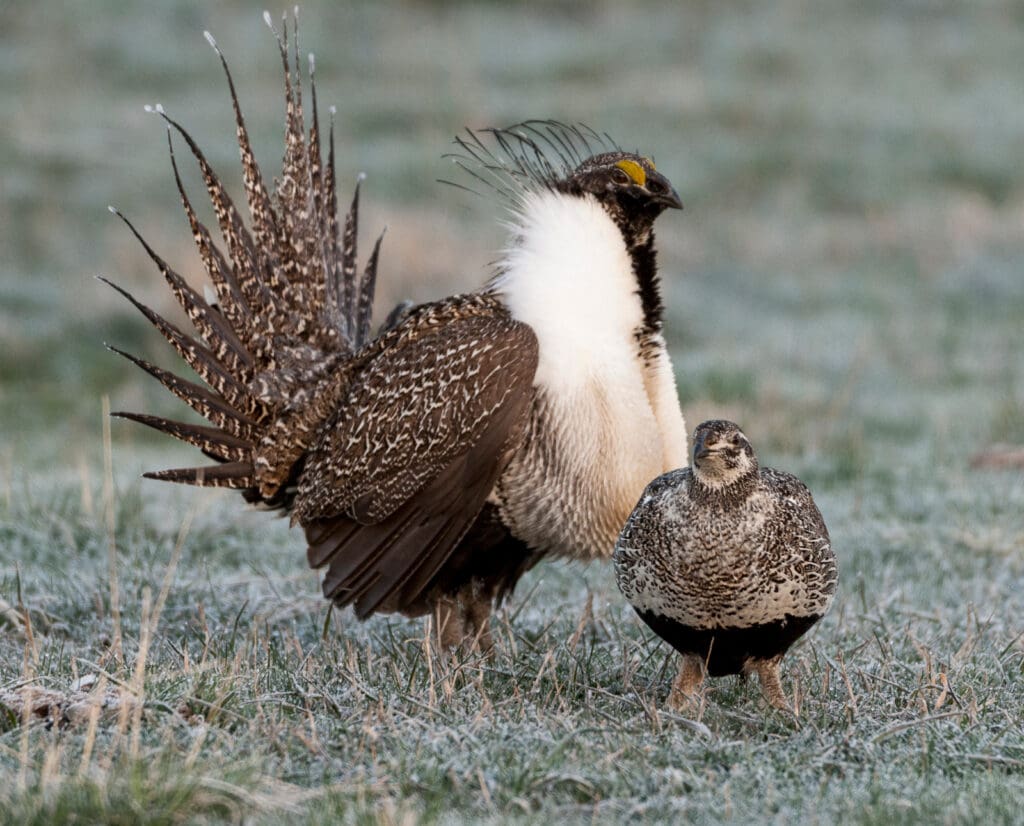
Sage Grouse Identification
Identifying birds in the field can be challenging, especially when hunting species you are unfamiliar with. One resource I always recommend is the free All About Birds guide from The Cornell Lab of Ornithology. Its “four keys to identification”—size and shape, overall color and pattern, behavior, and habitat—are incredibly helpful for learning to distinguish birds.
When identifying the Greater Sage-Grouse, size is one of the best indicators. As the largest grouse in North America, they are known for their large, plump bodies, small heads, and long, pointed tails. Adult males are almost twice the size of adult females, and their size and appearance can change drastically during displays. Compared to other more readily known birds, they are larger than a pheasant but smaller than a wild turkey.
Sage grouse sport a coloration of mottled dark brown and gray with a distinctive black belly, a key feature that both males and females share. However, males can be identified by their white breast ruff, black throat, and yellow eye combs. Females have a dusky cheek patch highlighted by white markings behind their eyes, and juveniles and yearlings are often smaller, paler versions of their adult counterparts. Wing feathers and molt stage are the best way to indicate young birds’ ages.
In Wyoming, it is common to encounter sage grouse and dusky grouse within the same habitat. At many elevations, they may even be found intermingling during their morning feedings. This makes it very important to understand their differences before pulling the trigger. The starkest differences will be in their bellies and tails. Dusky grouse have shorter, even, square-tipped tails and lack the black belly of sage grouse. Duskies are also smaller.
In some states, hunters may also need to distinguish sage grouse from sharp-tailed grouse and hen pheasants. Sharp-tailed grouse are significantly smaller and have a browner appearance, a pale or buff belly, and a short, pointed tail. While similar in size to sage grouse and having long, pointed tails, hen pheasants are more buff-brown in color, making them easier to tell apart. While the differences may seem minimal, with practice, you will soon quickly learn to distinguish these birds from one another.
Sage Grouse Behavior During Hunting Season
For much of the year, sage grouse are easy to overlook. Unlike other grouse species, sage grouse do not roost in trees; they roost and loaf on the ground, relying on sagebrush for cover. Like most other Western upland birds, the best hunting opportunities occur three hours after sunrise and three hours before sunset. During these windows, they move between roosting and feeding areas, leaving plenty of scent for bird dogs to track.
Sage grouse may appear slow and deliberate on the ground, but they are impressive fliers. Even though they have slower wing beats than other grouse, sage grouse can reach up to 50 mph in level flight, allowing them to soar long distances once airborne. On the ground, they generally prefer to walk, typically covering less than a mile per day. Thanks to their short legs, they rarely run. Instead of sprinting away from danger, they usually rely on their excellent camouflage or take flight to evade threats. That means if you’re after a mature bird, or a “bomber,” pay attention during the covey rise. Wait for the largest, darkest bird of the bunch.
As the hunting season progresses and pressure increases, sage grouse may become more skittish. You may find they unexpectedly flush wild, giving you little chance to do anything besides marvel at them as they soar beyond gun range. But don’t worry if the first flush takes you by surprise. Stay ready—there’s often a second flush of stragglers who were initially too cautious to take off with the rest of the covey.
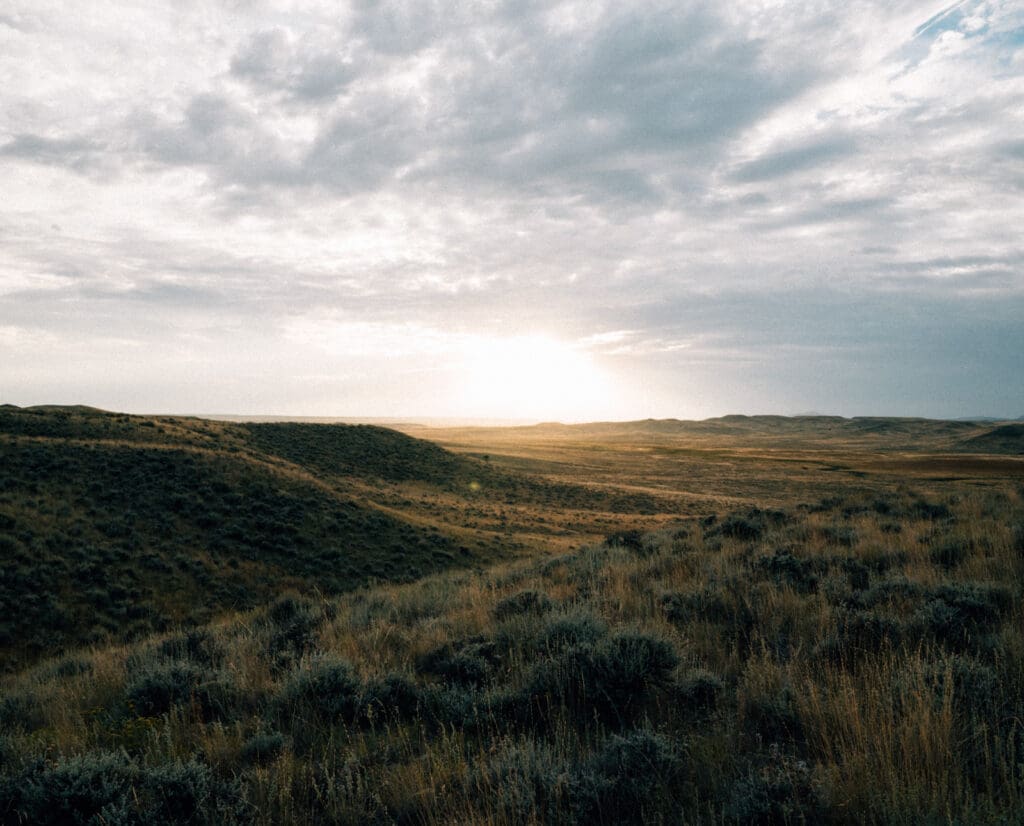
What Does Sage Grouse Habitat Look Like?
Sage grouse thrive in the vast sagebrush flats that stretch across the American West, as this unique sagebrush habitat is the only one they call home. In Wyoming, hunters often find success on large parcels of public land, free of trees, where uninterrupted areas of sagebrush sprawl at elevations ranging from 5,000 to 9,000 feet.
Because their diet is closely tied to their habitat, knowing what sage grouse are feeding on makes it easier to locate them. In the winter, they primarily rely on sagebrush leaves for survival, while in the spring and summer, they supplement their diet with forbs, flowers, and insects like grasshoppers. In the early fall as their diets are transitioning, sage grouse are often found in wet meadows near springs, especially those adjacent to large swaths of sagebrush. These areas tend to have taller and more robust sagebrush that creates a denser canopy, offering ample cover.
Hunters can also find luck working sagebrush draws leading from stock ponds or small reservoirs. When scouting a promising area, signs like feathers and droppings can be key indicators of sage grouse presence. Fresh sage grouse scat is distinctive, but it is important to know that their droppings shift in appearance as they transition from eating forbs and insects to a diet of 100 percent sagebrush. Fall scat can vary from single, more liquid-like greenish-white droppings to a pile of scat that appears like Cheeto’s accompanying tar-like droppings. Find fresh scat, and you’ll find sage grouse. It is a sure sign that birds are nearby.
It’s a little-known fact that sage grouse are the only animals that can survive on a pure sagebrush diet. While sheep, elk, and pronghorn eat sagebrush, they all consume it with other vegetation to thrive. Because the sage grouse’s digestive system is uniquely equipped to handle sagebrush’s volatile oils, their tar-like scat, known as cecal tar, is a byproduct of their specialized gut, which allows them to separate and excrete these oils.
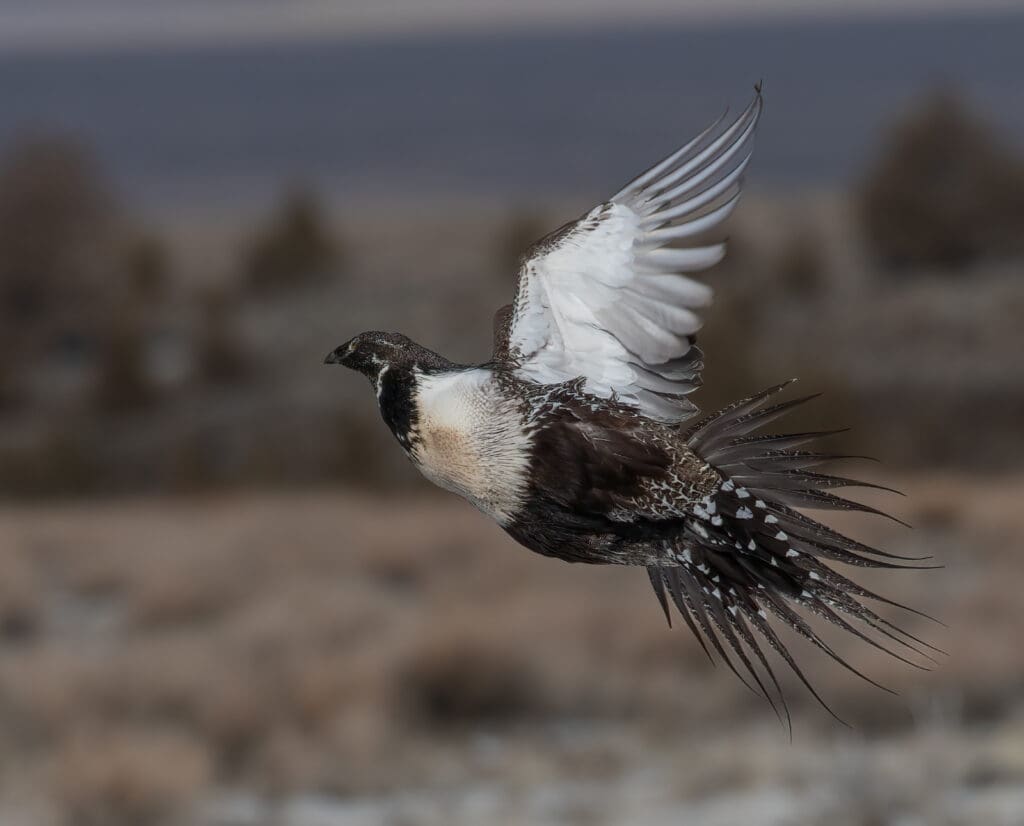
What You Need To Hunt Sage Grouse
Like any outdoor adventure, having the right gear can make all the difference. My top tip? Bring more water than you think you will need, then double it. Both you and your dogs will need plenty of hydration, especially since the Western prairies in early fall are often hot and arid. Sage grouse are typically found in treeless areas, which means no shade, and both you and your dogs will sweat and dehydrate faster than you realize. Packing electrolyte supplements along with your water is another great way to stay ahead of dehydration.
Sage grouse hunting can also be unpredictable. You might bag your limit straight out of the truck or spend the entire day hiking under a blazing sun, and you will never know which option you will be dealt. Subsequently, I’m a huge advocate for investing in a good pair of lightweight, uninsulated boots paired with wool socks and good brush pants.
My clothing recommendation is frequently met with skepticism. Sure, you can hunt in jeans, a t-shirt, and any ol’ pair of hiking boots, but after a few miles, when you’re drenched in sweat, your legs are chafing, and your feet are sore, you will wish you had better gear. Quality brush pants protect your legs from the harsh brush and keep the stickers and cactus out, while lightweight boots make the miles more bearable.
While wearing blaze orange isn’t a legal requirement for bird hunting in Wyoming, I always recommend wearing at least one item for safety, especially since you’ll likely be sharing the area with big game hunters. By late September, deer and pronghorn archery seasons are in full swing, and rifle season for pronghorn opens in some areas on September 1. For me, the peace of mind that comes with wearing a little blaze orange far outweighs any risk of an accidental encounter with other hunters.
If you want to make the most of a DIY hunt, I can’t recommend a good e-scouting tool like OnX Maps enough. Pre-hunt research is crucial, especially when hunting wild birds in a limited season window. Digital scouting is incredibly helpful for pinpointing areas with promising habitat and nearby water sources, saving you and your dogs a lot of frustration and giving you a better shot at success. Scouting is key, and putting in the effort beforehand can mean the difference between coming home empty-handed and having the chance to shoulder your gun in a prime location.
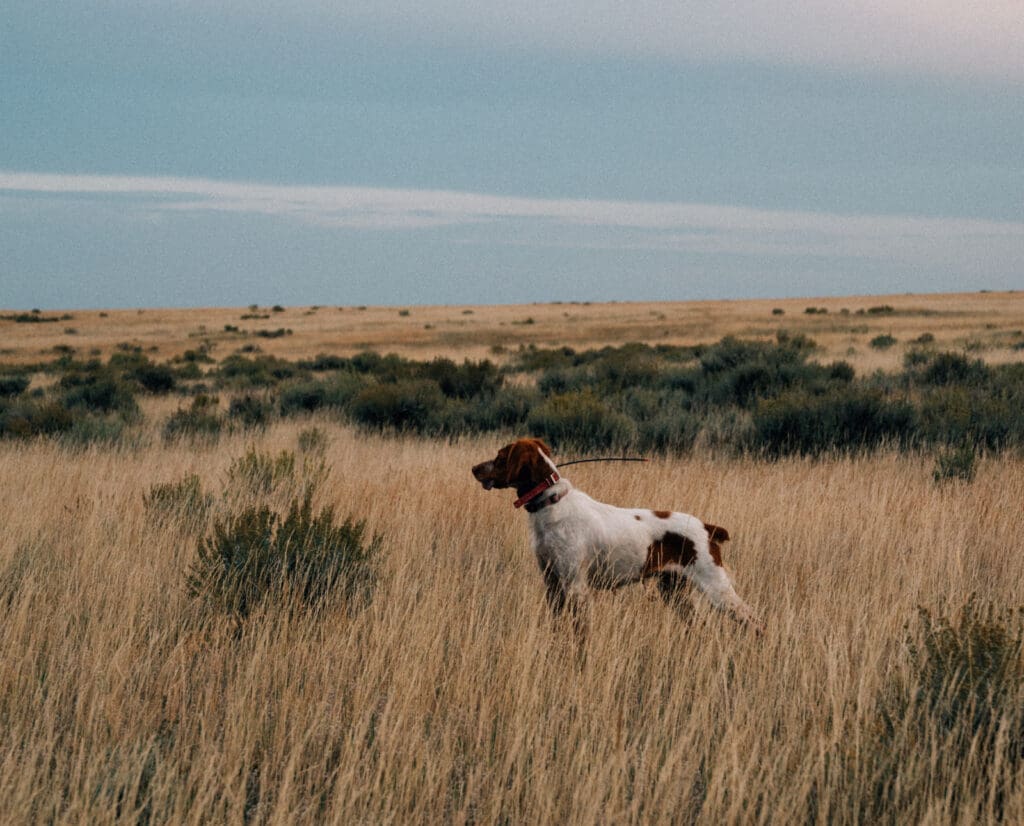
Pointing Dogs Versus Flushing Dogs
Locating sage grouse can be a time-consuming endeavor, sometimes burning hours of time and miles hiking across an otherwise empty prairie. Given the vastness of sage grouse country, I prefer a wide-ranging pointing dog.
Early season conditions, with intense heat and lack of shade, dictate that these dogs must know how to pace themselves from the get-go to avoid burning out or suffering from heat-related injuries. I especially value dogs that can not only locate birds efficiently but also hold a steady point until the hunters are in a position to flush. In this type of hunt, patience and endurance are as important as speed.
Shotguns and Shot Sizes
While 12- and 20-gauge shotguns are the go-to for many upland hunters, I personally love carrying my 20-gauge O/U RFM SK Feather from Upland Gun Company. As a passionate wild bird hunter in Wyoming, I find a versatile, lightweight gun is worth its weight in gold. It allows me to stay out longer and cover more ground without getting weighed down. The ability to quickly switch out shot sizes and chokes makes it ideal for everything from large sage grouse to the fast-flying Hungarian partridge.
For sage grouse, I prefer #6 shot with a modified shotgun choke in the first barrel and an improved modified choke in the second, which gives me more flexibility for both close and long shots in the wide-open terrain. One tip I share with hunters, especially those coming from the East, who are used to hunting in tighter quarters, is to embrace longer shots. The vastness of the landscape and the wariness of sage grouse often require taking shots beyond what you may be accustomed to, so don’t be afraid to push your range a bit.
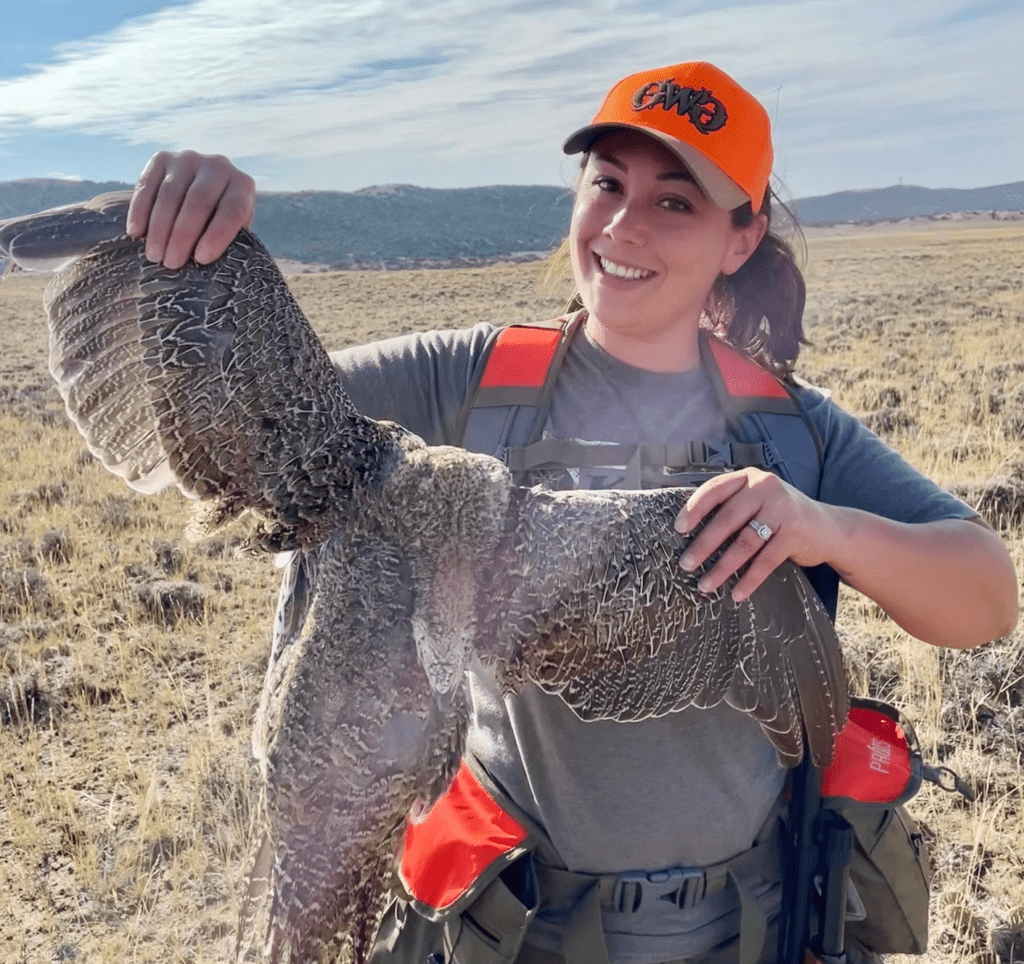
Stay Safe In Sage Grouse Country
Preparation and awareness are key to enjoying the raw beauty of sage grouse country while keeping yourself and your dog safe.
The high desert and sagebrush steppe, that is, sage grouse country, is an incredibly dramatic, remote, and mostly untouched landscape. Its rugged, isolated nature demands extra caution. You will likely cover miles of rough terrain, and your fitness will directly impact how much ground you can cover. If you are in mountainous terrain, you might also face significant elevation changes, so being in good cardiovascular shape is essential.
If you are coming from lower altitudes, especially from near sea level, know that the thinner air at high altitudes can make physical exertion feel more difficult, resulting in altitude sickness. With the right precautions, you can manage this by drinking plenty of water and electrolytes and consuming light, nutritious meals. If you think adjusting to elevation might be tough, consider arriving a day early to give your body time to acclimate before your hunt.
September weather in the West, especially in mountainous areas like Wyoming, can be wildly unpredictable. I often equate it to a toddler learning to work through the steps of emotional regulation. Cool, frosty mornings frequently give way to scorching afternoons. It is best to dress in layers to adapt to changing temperatures and always pack a rain jacket for sudden thunderstorms or wind bursts.
One often-overlooked tip: pack allergy medication. The wind here carries a lot of dust and pollen, and you never know how it might affect you.
Rattlesnakes are another factor to be aware of, particularly on hot afternoons when they are most active. Even if you don’t see them, they are around. Rattlesnake avoidance training for dogs is highly recommended. While opinions on the rattlesnake vaccine vary within the bird dog community, I personally prefer to vaccinate all my guide dogs annually. I always tell people to do what they view is best for them and their dogs but for me, it’s about prevention. You know that saying, an ounce of prevention is worth a pound of cure? I’m no expert in veterinary science, but I’d rather feel prepared upfront than have to question my decisions on the back end if my dog faces a life-threatening situation in the field.
Other hazards include badgers, porcupines, skunks, and cactus. While the risk is low, it is important to keep your dog from chasing badgers. Not only could a badger bite could lead to a hunt-ending injury but it could potentially transmit disease. Trapping is also very common out West, carrying cable cutters in case your dog encounters a trapper’s snare is a good idea. You will also want to have hemostats for porcupine quills and tweezers for cactus spines. I also advocate for having a pre-mixed bottle of skunk odor remover in your truck because there is nothing worse than sharing quarters with a dog that has been sprayed.
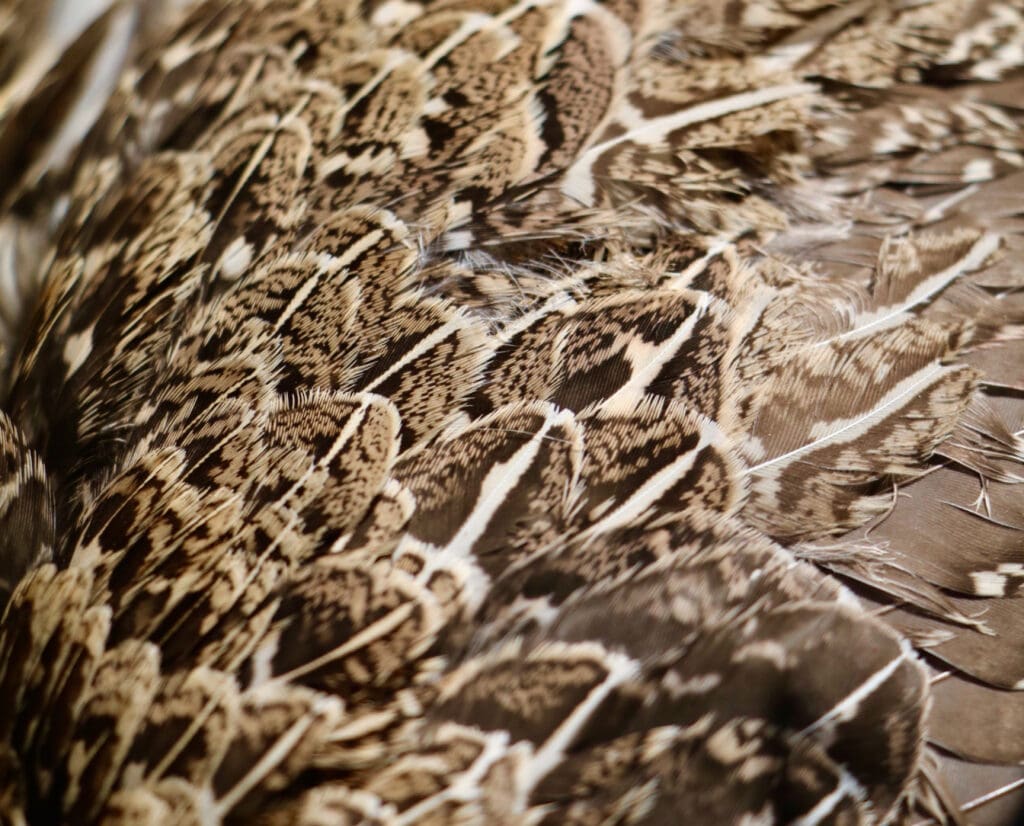
Sage Grouse Hunting Ethics
I spend an extraordinary amount of time in the prairies. Most of that time is spent walking and watching. I get immense joy from simple observation. Observation allows me to collect data about the birds, the landscape, the available resources, and the interactions of other species and humans. I use this data to strategize how and when I interact, if at all, with this delicate species. Being connected to both the birds and the land gives me an overarching sense of pride that I hold sacred.
As hunters, we are stewards of the land and the wildlife we pursue, and as such we must always be reflecting on our impact. Given the uncertain future of sage grouse hunting, I urge every hunter to approach their hunt with a keen sense of ethics. The responsibility to protect these birds through mindful hunting pressure and selective harvest is paramount. Hunting with the right intentions and balancing consumption with conservation, is essential to safeguarding the long-term livelihood of this species. This will be an experience that will etch itself into your memory for a lifetime to come. Know that if you get the chance to hunt these iconic birds, it is a priceless experience to be cherished, revered, and respected.
As you strive to make your hunt unforgettable, you will inevitably find yourself in a position in which you must make deliberate ethical decisions, much of which will revolve around how selective you will be in your shooting and take. These decisions revolve around evaluating your ethical stance on re-flushing coveys, shooting multiple birds from a single covey, revisiting the same hunting grounds multiple times, and considering what you would do if you wound a bird you cannot recover. When hunting such a fragile species, the principles of fair chase become even more critical. Your ethical compass should be stauncher with sage grouse than it might otherwise be with other upland birds.
Each sage grouse harvested should be treasured, not only as a game bird but as a relic of a unique landscape and time, a delicate and majestic piece of the American West. Appreciate the opportunity you have to harvest them by jumping on the opportunity to take good care of your birds post-hunt with good meat care practices and tasteful photos.
The opportunity to traverse the vast sagebrush landscapes of Wyoming and other sage grouse strongholds is a privilege that comes with significant responsibility. The future of sage grouse hunting is uncertain, but with a dash of luck and careful management and conservation efforts, it is my hope that this tradition will be passed down for generations to come. The journey through sage grouse country is a testament to the beauty of wild places and the enduring connection between hunter and nature—a legacy of these iconic birds to be cherished, respected, and passed down with pride.
Danielle Schoenwolf is a Wyoming native, upland guide, and the owner of Buffalo Creek Outfitters, where she helps others experience the thrill of chasing wild birds across the rugged heart of central Wyoming. Known for her straight-shooting style, Danielle is passionate about conservation, education, and creating space for families, women, and first-timers in the uplands. She brings heart, humor, and hard-earned knowledge to every hunt—and every story she tells—using her voice to break barriers, build community, and redefine what it means to belong in bird country.





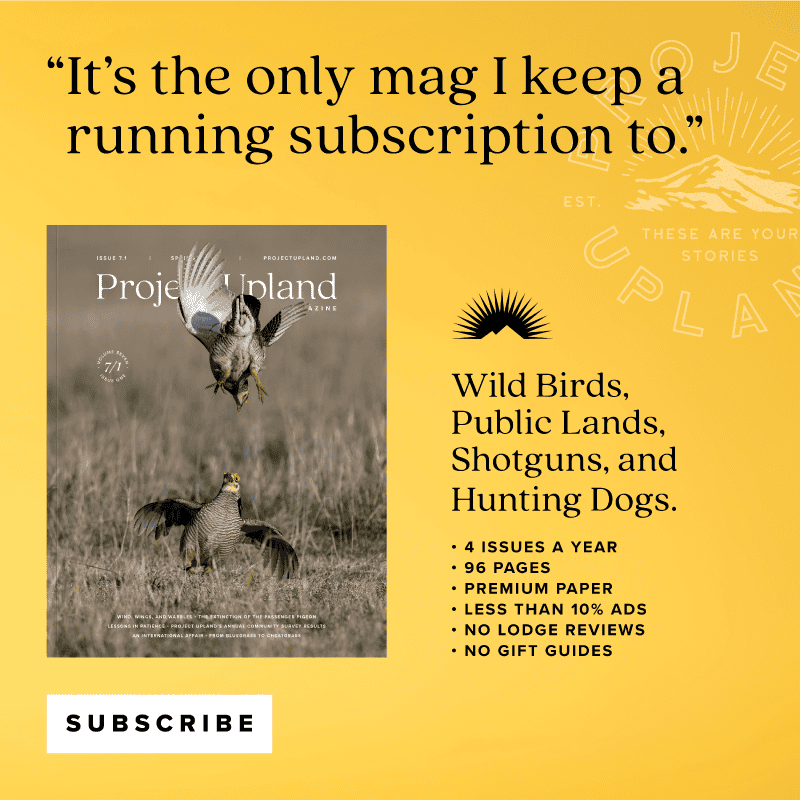
Excellent article. I’m heading to Wyoming this weekend to hopefully get my first Sage grouse.
Excellent article Danielle. Thanks for sharing.